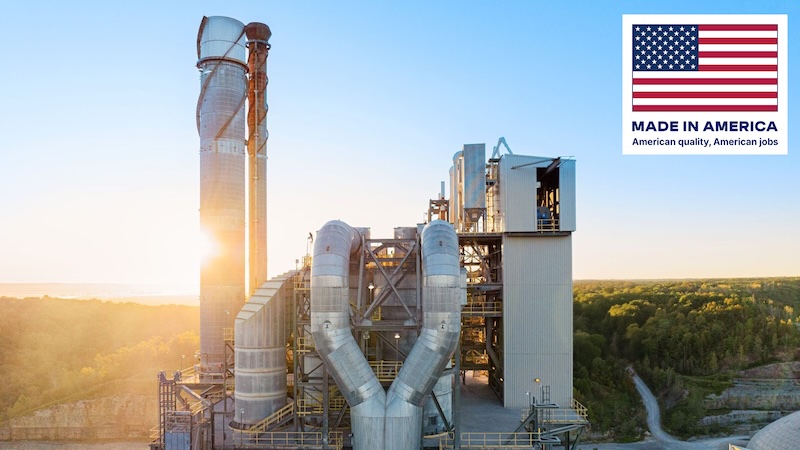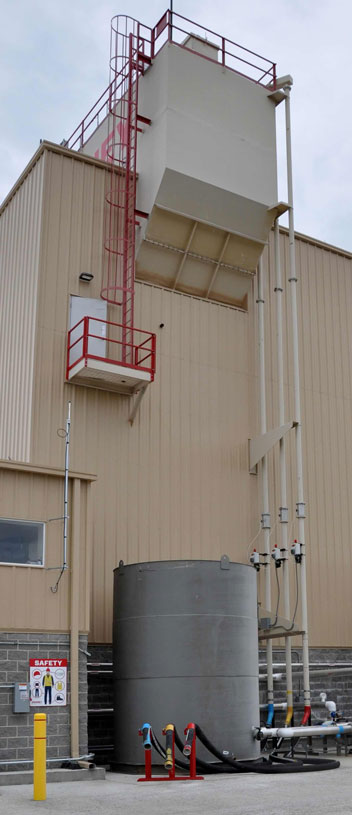World Benchmarking Alliance’s (WBA) inaugural Heavy Industries Benchmark ranks 34 cement, 45 steel and 12 aluminum producers on carbon dioxide emissions reduction metrics. Four of the top five are cement producers Cemex, CRH, Holcim and Heidelberg Materials, all with major North American market positions.
Three other multinationals – Votoratim Cimentos, Asia Cement and Siam Cement – along with one aluminum and two steel producers round out the 2024 Heavy Industries Benchmark top 10.
The rankings are based on scores up to 100 of Accelerated Climate Transition (ACT) criteria, plus smaller Core Social Indicator and Just Transition data. ACT assessments emphasize actual CO2 emissions reduction performance against published targets; energy efficiency measures; low-carbon energy or electricity generation and consumption; and trend in future emissions intensity of own production or sold products.
HEAVY INDUSTRIES BENCHMARK
Top 10 Performers
| Producer | ACT score | Total score |
| Cemex S.A.B. de C.V. | 40.6 | 56.4 |
| CRH Plc | 37.6 | 49.8 |
| Holcim Ltd. | 29.9 | 47.1 |
| Norsk Hydro (aluminum) | 26.5 | 46.6 |
| Heidelberg Materials | 37.1 | 46.5 |
| Posco (steel) | 33.0 | 44.5 |
| Siam Cement | 32.1 | 42.3 |
| JSW Steel | 29.0 | 41.7 |
| Votorantim Cimentos | 36.5 | 41.5 |
| Asia Cement | 36.3 | 40.3 |
Cemex tops the Heavy Industries ranking and ACT scoring. Heavy Industries, Electric Utilities, Oil and Gas, Buildings, Transport and Automotive comprise the WBA Climate and Energy Benchmark survey, which encompasses 450 companies across the globe.
“We are proud to achieve the highest score in the 2024 Climate and Energy Benchmark ranking, demonstrating our leadership in climate action and social impact,” said Cemex CEO Fernando González. “We are committed to achieving our ambitious 2030 decarbonization goals on the path to becoming a net-zero company by 2050, while making a positive and lasting difference in our communities.” Since the launch of its Future in Action program in 2020, he adds, Cemex has achieved record-breaking progress, reducing (GHG Protocol-defined) Scope 1 and 2 emissions by 13% and 10%, respectively – a pace that previously would have taken Cemex cement, concrete and aggregate operations 15 years to accomplish.
Despite the performance of Cemex and its global or multinational peers, WBA researchers contend that cement, steel and aluminum production emissions intensities need to fall three times faster in the next five years in order for Heavy Industries to align with widely adopted CO2 emissions reduction goals equating to a global temperature gain capped at 1.5°C by 2100. Upon releasing the Heavy Industries Benchmark ranking, WBA noted that cement, steel and aluminum “have new and innovative technologies available that can lead companies towards a low carbon future, but investments in research & development for market-ready technologies is insufficient. Of the companies assessed, 24% disclose R&D expenditure in low-carbon technologies, and just 10% in non-mature technologies.”



